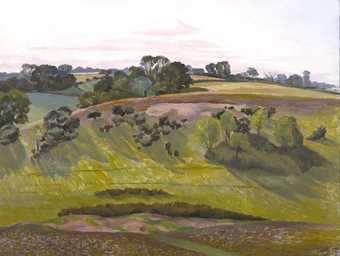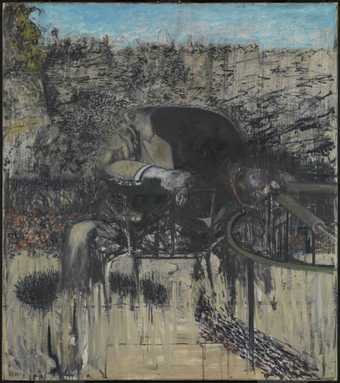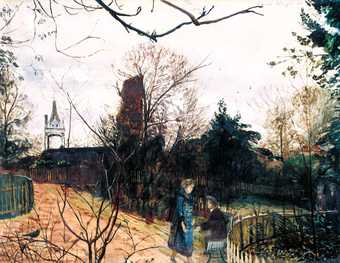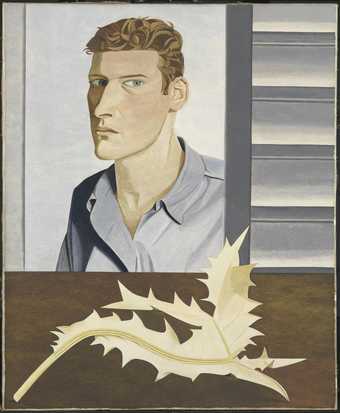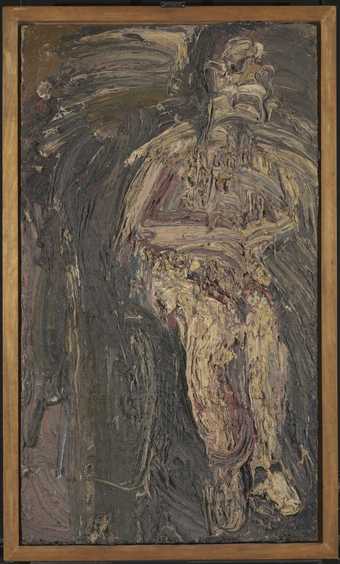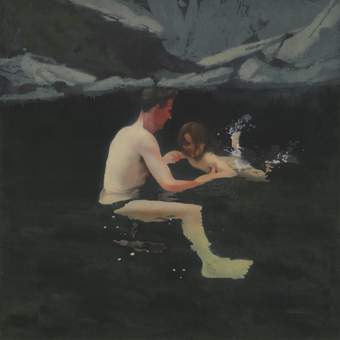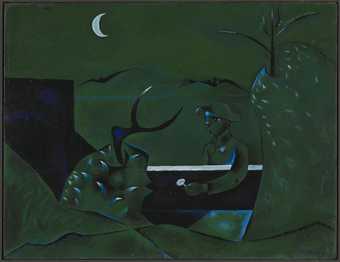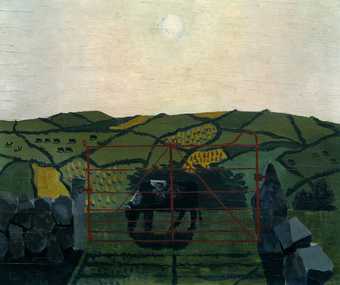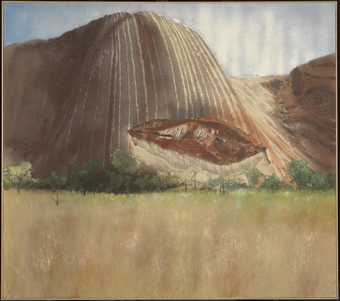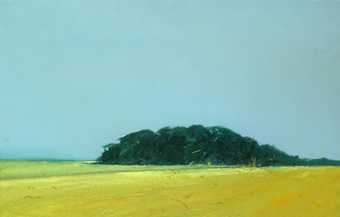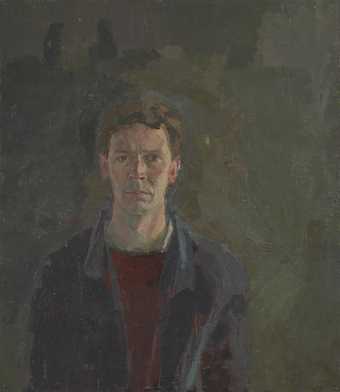
Not on display
- Artist
- Michael Andrews 1928–1995
- Medium
- Oil paint on canvas
- Dimensions
- Frame: 550 × 505 × 73 mm
support: 406 × 359 mm - Collection
- Tate
- Acquisition
- Presented by the executors of the estate of David Wilkie 1993
- Reference
- T06681
Display caption
Many of the works owned by Wilkie held a particular, often personal, significance for him. He was interested in philosophy and he saw the art he admired as expressing certain philosophical or fundamental truths. This painting by Michael Andrews demonstrates this principle. It portrays a tramp whom the artist sometimes saw when he occupied a communal studio in Digswell, Hertfordshire, in the late 1950s. Wilkie's attitude to such social outcasts - outsiders looking in on society - was compassionate and respectful. He observed that characters like Digswell Man, as Andrews called him, 'possess a true knowledge of human life... through their fundamental life'.
Gallery label, September 2004
Does this text contain inaccurate information or language that you feel we should improve or change? We would like to hear from you.
Technique and condition
The following entry is based on an interview with the artist held on 8 June 1993.
Andrews painted this study for two larger paintings he did at Digswell. It is in artists' oil colours on a piece of previously painted, white commercially oil primed linen canvas cut from an abandoned, larger painting and stretched onto a stretcher after painting.
Painted directly and quickly onto the unmodified surface of the existing painting, it is one of a series Andrews describes as being 'much more freely and exaggeratedly painted than most of my earlier or later work.' The oil paint is vigorously brushed on, slightly thinned with a mixture of turpentine and linseed oil.
The painting is not varnished and is in good condition, the diagonal line of cracks crossing the lower right edge apparently resulting from folding the canvas before it was stretched in its present position. The painting was surface cleaned and its attachment to the stretcher improved on acquisition.
The black and gold painted and glazed frame in which the work was acquired was not the artists' choice and has been replaced by one designed in conjunction with him.
Explore
- architecture(30,960)
-
- townscapes / man-made features(21,603)
-
- path(385)
- emotions and human qualities(5,345)
-
- compassion(47)
- actions: postures and motions(9,111)
-
- walking(607)
- man(10,453)
- UK cities, towns and villages(12,725)
-
- Digswell(1)
- Hertfordshire(143)
- England(19,202)
- England, East(1,353)
- England, Southern(8,982)
- health and welfare(696)
-
- homelessness(18)
You might like
-
John Nash A Suffolk Landscape
c.1936–7 -
Francis Bacon Figure in a Landscape
1945 -
Carel Weight The Rendezvous
1953 -
Michael Andrews A Man who Suddenly Fell Over
1952 -
Lucian Freud Man with a Thistle (Self-Portrait)
1946 -
Leon Kossoff Man in a Wheelchair
1959–62 -
Carel Weight Sienese Landscape
1960–3 -
Michael Andrews The Deer Park
1962 -
Michael Andrews Melanie and Me Swimming
1978–9 -
John Craxton Dark Landscape
1944–5 -
Kenneth Rowntree Cornish Landscape
1952 -
Sir Cedric Morris, Bt Landscape of Shame
c.1960 -
Michael Andrews Laughter Uluru (Ayers Rock), The Cathedral I
1985 -
Colin Self Large Harvest Field and Woods near Happisburgh, Norfolk
1984 -
Michael Andrews Self-Portrait
1959

